Journey of the First Fleet
Learning intention
Students are learning to:
- use images and written sources to investigate the people on board the First Fleet
- describe people, events and actions related to the First Fleet
- understand the historical context of the journey and the broader impact on Aboriginal people
Success criteria
Students will be successful when they can:
- give examples of the experiences of people on board the First Fleet using sources
- identify the reasons for the First Fleet’s journey and why various groups were passengers
- explain the concept of terra nullius
Student Activities
The First Fleet departs
Students interpret the feelings of convicts as they prepare for their voyage to New South Wales.
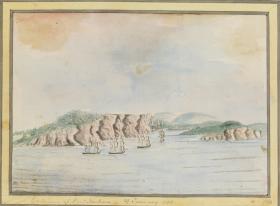
All aboard!
Students recreate the journey of the eleven ships of the First Fleet across the ocean to New South Wales.
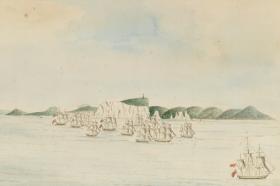
Are we there yet?
Students explore the varied convict experiences onboard the ships of the First Fleet.
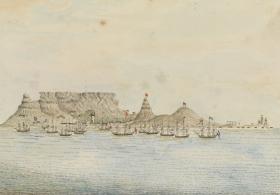
Ahoy!
Students discover the different forms of ship-to-ship communication employed by the First Fleet.
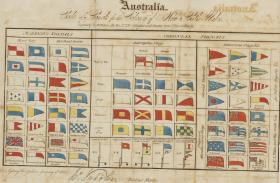
Time to play a game
Students test out their knowledge of the journey of the First Fleet by creating a fun board game.
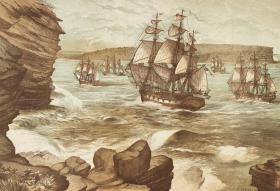
Eighteen years earlier...
Students examine the contact the British had with New South Wales, prior to the arrival of the First Fleet.
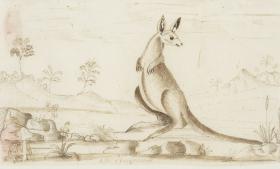
Change your tune
Students listen to and scrutinise the song Botany Bay, before rewriting the lyrics to reflect our nation’s history.
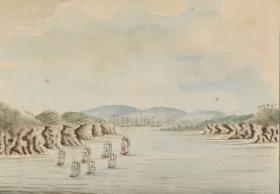
NSW Syllabus for the Australian Curriculum History K-10
HT2-3 describes people, events and actions related to world exploration and its effects
HT2-4 describes and explains effects of British colonisation in Australia
HT2-5 applies skills of historical inquiry and communication
Stories of the First Fleet, including reasons for the journey, who travelled to Australia, and their experiences following arrival (ACHHK079)
Students:
- identify reasons for the voyage of the First Fleet and explain why various groups were passengers
- describe the establishment of the British colony at Port Jackson
- using a range of sources, investigate the everyday life of ONE of the following who sailed on the First Fleet and lived in the early colony: a soldier, convict, ex-convict, official
The nature of contact between Aboriginal people and/or Torres Strait Islanders and others, for example, the Macassans and the Europeans, and the effects of these interactions on, for example, families and the environment (ACHHK080)
Students:
- Explain the term terra nullius and describe how this affected the British attitude to aboriginal and Torres Strait Islander peoples
- use sources to identify different perspectives on the arrival of the British to Australia
Comprehension: chronology, terms and concepts:
- respond, read and write, to show understanding of historical matters
- use historical terms
Analysis and use of sources:
- locate relevant information from sources provided
Perspectives and interpretations:
- identify different points of view within an historical context
Empathetic understanding:
- explain how and why people in the past may have lived and behaved differently from today
Research:
- pose a range of questions about the past
- plan an historical inquiry
Explanation and communication:
- develop texts, particularly narratives
- use a range of communication forms (oral, graphic, written) and digital technologies
Continuity and change: changes and continuities due to British colonisation of Australia.
Cause and effect: reasons for a particular historical development
Perspectives: different points of view within an historical context
Empathetic understanding: how and why people in the past may have lived and behaved differently from today.
Significance: the importance and meaning of national commemorations and celebrations, and the importance of a person or event.
Contestability: historical events or issues may be interpreted differently by historians, eg British 'invasion' or 'settlement' of Australia.
Learning across the curriculum
- Aboriginal and Torres Strait Islander histories and cultures
- Critical and creative thinking
- Ethical understanding
- Intercultural understanding
- Literacy
- Personal and social capability
Why did Europeans settle in Australia?
Stories of the First Fleet, including reasons for the journey, who travelled to Australia, and their experiences following arrival (ACHASSK085)
- investigating reasons for the First Fleet journey, including an examination of the wide range of crimes punishable by transportation, and looking at the groups who were transported
- investigating attitudes to the poor, the treatment of prisoners at that time, and the social standing of those who travelled to Australia on the First Fleet, including families, children and convict guards
The nature of contact between Aboriginal and Torres Strait Islander Peoples and others, for example, the Macassans and the Europeans, and the effects of these interactions on, for example, people and environments (ACHASSK086)
- exploring the impact that British colonisation had on the lives of Aboriginal and Torres Strait Islander Peoples (dispossession; dislocation; and the loss of lives through conflict, disease, loss of food sources and medicines)
Additional information
The following information supports the above activities. Read the activities first.
General information about the First Fleet
On 13 May 1787 a fleet of 11 ships set sail from Portsmouth, England under the command of Captain Arthur Phillip. This historic convoy, which later became known as the First Fleet, carried well over 1000 men, women and children to the other side of the globe. Almost half of those on board were convicts sentenced to transportation; the rest were officers, crew and marines and their families.
The fleet consisted of two Royal Navy escort ships, HMS Sirius and HMS Supply, six convict transports, the Alexander, Charlotte, Friendship, Lady Penrhyn, Prince of Wales and the Scarborough, and three store ships, the Borrowdale, Fishburn and Golden Grove.
From Portsmouth the First Fleet travelled via Tenerife and Rio de Janeiro to the Cape of Good Hope, the fleet’s last port of call before striking out for Terra Australis.
The fleet arrived first in Botany Bay on 18 January. Despite a glowing recommendation from Sir Joseph Banks, it proved unsuitable for a permanent settlement, especially as it lacked a supply of fresh water.
On 26 January, the fleet made anchorage at Warrane/Sydney Cove in Port Jackson. This site had everything needed for the new colony; deep water close to the shore, shelter and fresh water. Phillip named the bay Sydney Cove, after Lord Sydney the British Home Secretary. It was known as Warrane by the local Gadigal people.
Activity 1 Information
Information on the drawing - Convicts embarking for Botany Bay, ca. 1790 by Thomas Rowlandson.
The drawing depicts an overcrowded small timber boat holding six convict passengers, and skipper leaning on the tiller. Two convicts are being pushed into the boat by a redcoat soldier whilst another redcoat looks on with rifle in slope position. Similar scenes can be made out in the far background, along with two corpses hanging from a gibbet.
On the back of the framed drawing is pasted some older printed material, which appears to be either a sale or catalogue description. The exact date of the printed material is unknown although it was after 1827.
Activity 2 Information
William Bradley’s full drawing shows the First Fleet leaving England on 13 May 1787 accompanied by a twelfth ship, HMS Hyaena, that escorted the fleet for the first 200 miles. Five of the Hyaena’s crew were ‘lent’ to the Fishburn at the start of the voyage, as some of the original crew were missing, and they decided to stay and go to Botany Bay.
Activity 3 Answers
Q: How could you eat this hard bread without breaking your teeth?
A: You could:
- Let the butter melt into them (if you had enough?)
- Dunk them in your drink (tea, coffee or beer – if you had any?)
- Pound them up into crumbs – to thicken a soup/gruel or use the crumbs like flour
- Suck on them – especially if you didn’t have many teeth! Remember there were no dentists!
Salted meat is meat preserved or cured with salt. Salt inhibits the growth of micro-organisms. First, salt was rubbed into the meat. The meat was soaked in brine (highly salted water) to remove the blood. After taking it out of the brine, each layer of meat was packed in a barrel with lots of extra salt between each layer. This process was repeated several times. Finally, the barrel was filled with fresh brine and sealed. When it came time to eat, the meat would be rinsed in fresh water and boiled.
Activity 5 Information
More information on the First Fleet convict on board experience can be found in the Convict Women of the First Fleet Learning Activity. An option could be to complete this board game after students have completed both of these learning activities.
Source list for image details in student activities
The First Fleet Departs
Image 1: Thomas Rowlandson, [Convicts embarking for Botany Bay, ca. 1790 / drawing by Thomas Rowlandson], London: Forgotten Books, 1887
Image 2: Thomas Rowlandson, [Convicts embarking for Botany Bay, ca. 1790 / drawing by Thomas Rowlandson], London: Forgotten Books, 1887
Image 3: Thomas Rowlandson, [Convicts embarking for Botany Bay, ca. 1790 / drawing by Thomas Rowlandson], London: Forgotten Books, 1887
All Aboard
Image 1: William Bradley, Opp. p. 13. `Sirius, Supply & Convoy : Needle Point ENE 3 miles. Hyaena in Companny. 13 May 1787', ca. 1802